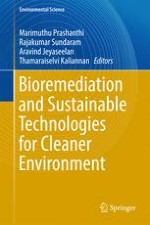2017 | OriginalPaper | Buchkapitel
The Role of Decomposer Animals in Bioremediation of Soils
verfasst von : S. Prakash, M. Selvaraju, K. Ravikumar, A. Punnagaiarasi
Erschienen in: Bioremediation and Sustainable Technologies for Cleaner Environment
Aktivieren Sie unsere intelligente Suche, um passende Fachinhalte oder Patente zu finden.
Wählen Sie Textabschnitte aus um mit Künstlicher Intelligenz passenden Patente zu finden. powered by
Markieren Sie Textabschnitte, um KI-gestützt weitere passende Inhalte zu finden. powered by
